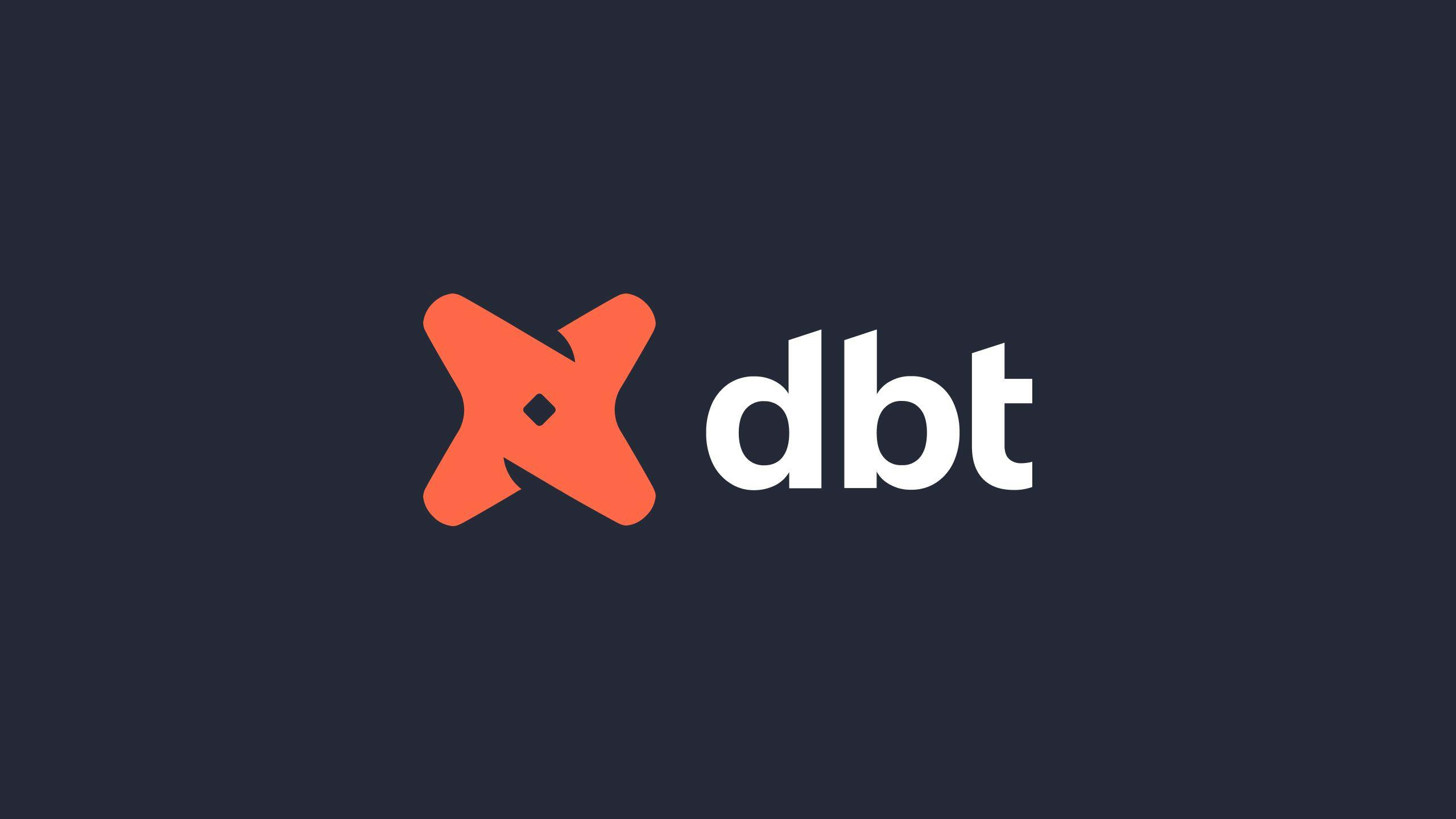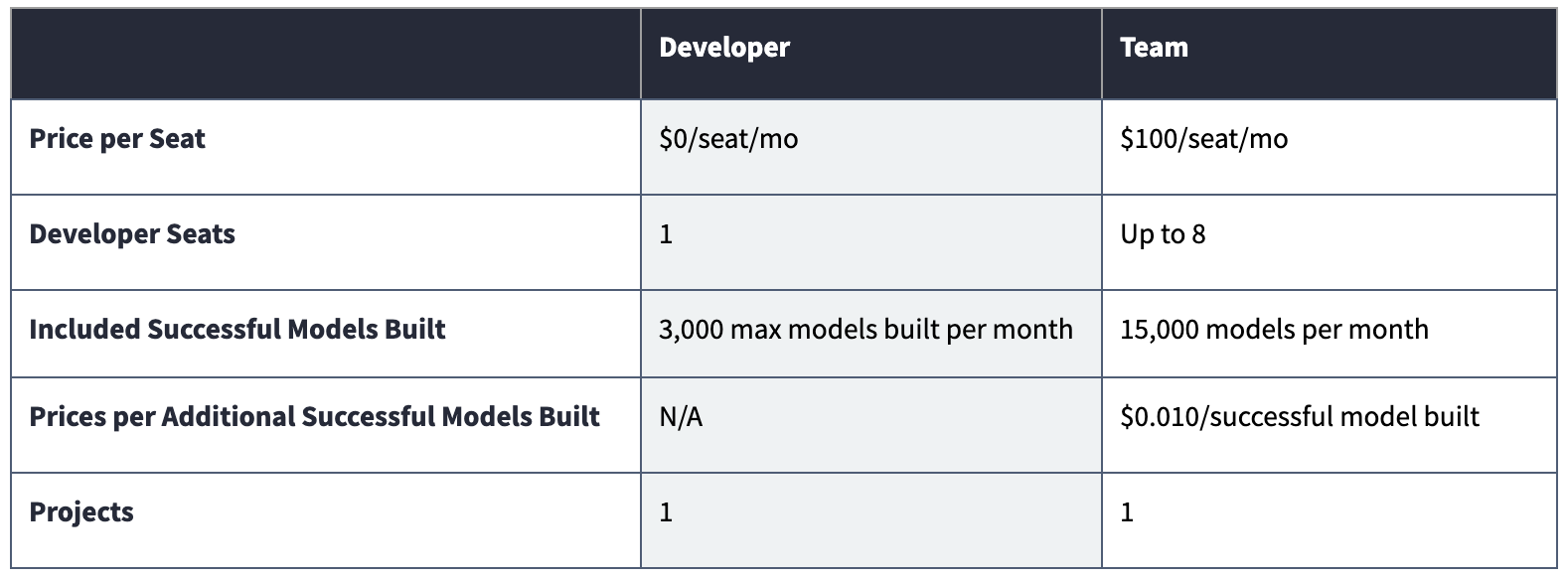Consumption-based pricing and the future of dbt Cloud
Aug 08, 2023
Company
Today I want to share an update on the next step in the commercialization journey for dbt Cloud. This is a change that we’ve known we wanted to make for a couple of years now, and it’s a critical step towards building the future that I believe in for dbt and dbt practitioners.
In this post I’m going to share the what, how, and why—why it’s time to go beyond seat-based pricing when trying to monetize a data infrastructure product.
The Challenges of Seat-Based Pricing
Our goal is for dbt Cloud to be the best way to operationalize dbt inside your organization. Today that includes CI/CD, an IDE, a scheduler, and a rich set of APIs. In the future dbt Cloud will continue to provide more and more tooling to operationalize dbt and help data teams build trusted data products at speed.
Since its launch in January 2020, dbt Cloud’s pricing has been almost completely based on the number of developer seats. But we’ve always known that seats are a poor way to measure the value that organizations get out of the dbt Cloud platform.
dbt Cloud is both a productivity tool and a piece of data infrastructure—you use it to write dbt code (productivity!) and to run it in production (infrastructure!). Productivity tools make sense to monetize via seats–the more humans who get value out of them, the more value they provide. But data infrastructure is not well monetized by seats: instead, its value is derived from (and best measured by!) the work it does. Most of us have gotten used to consuming data infrastructure based on how much we use it over the past decade.
What we’ve learned over the past three years as we have watched dbt Cloud’s product usage data is that all data teams are not the same. On one end of the spectrum, there are large teams with smaller infrastructure requirements. On the other, there are small teams with huge dbt projects who consume a ton of dbt Cloud infrastructure. In short, team size and infrastructure needs are not highly correlated. And this makes seats a bad way to measure the value that many organizations are getting from dbt Cloud today.
Not only is seat count an imperfect measure of customer value today, charging based on seats is totally misaligned with our roadmap for dbt Cloud. dbt Cloud is quickly moving from being a piece of useful productivity tooling to a critical platform that sits at the heart of the modern data stack. Many of the features I’m most excited about shipping will be infrastructure, and simply do not make sense to monetize based on seat count. I’ll return to this below.
So: today marks the day where we follow our Modern Data Stack peers down the path of monetizing like a data infrastructure product—based on the work the product is doing on your behalf.
Successful Models Built
Beginning in August 2023 we are taking our first step in a journey towards offering more consumption-based pricing for new dbt Cloud customers. After a ton of research—both via customer calls and looking at the data—the metric we’re going to use to measure consumption is the number of model materializations that dbt Cloud has successfully built on your behalf.
I’m very bullish on this metric. It’s easy to reason about. It’s easy to control. It directly maps to our infrastructure costs in delivering dbt Cloud to you. And most importantly, it directly maps to the value that you’re getting out of dbt Cloud.
If you’re interested to learn more about how this metric is calculated, please check out our documentation.
Developer and Team Plan Updates
Before going deep on the details, I want to share how we’re rolling out this change.
First, our goal here is to not raise prices across the board but rather to align pricing with value. The majority of the 6,000+ organizations who use dbt Cloud today will not see an increase in their price.
Second, we want to give existing users/customers time to assess, plan for, and adjust to these changes. No existing user or customer will be migrated to this updated pricing structure at this time.
We will migrate existing Developer plan users to the new plan on or after February 1, 2024.
Customers who purchased the dbt Cloud Team plan before August 12, 2023 will remain on their legacy pricing plan.
With that said, here are the updates to the Developer and Team plans. New customers will begin to onboard into these plans effective August 12, 2023.

New Developer plan users will continue to get one free developer seat and up to 3,000 successful models built per month. After the limit is reached, jobs will be paused for the remainder of the month.
New Team plan customers will get 15,000 models built per month included in their plan. Our usage data indicates that this allotment will cover the majority of all Team plan customers. If a Team plan account does go beyond this, each additional successful model built will be $0.01.
New Enterprise customer contracts will include both a seat-based and a consumption-based component. For information about Enterprise plan pricing, please contact our sales team to learn more.
Looking towards the future.
When I think about the trajectory for dbt and dbt Labs, I divide it into a few stages:
- Build the team. Early 2020 to mid 2022
- During this period, we had to grow our engineering organization from roughly 5 to 100+ amazing humans. This was a LOT of work.
- During this period, we had to grow our engineering organization from roughly 5 to 100+ amazing humans. This was a LOT of work.
- Build the platform. Late 2021 to today
- Starting in late 2021 we started to get the scale we needed to architect and build mature, scalable infrastructure. This journey is one that will continue indefinitely, but we’ve had a step-function change over the past 12+ months that has allowed us to ship with simultaneously higher velocity, quality, and scale.
- Starting in late 2021 we started to get the scale we needed to architect and build mature, scalable infrastructure. This journey is one that will continue indefinitely, but we’ve had a step-function change over the past 12+ months that has allowed us to ship with simultaneously higher velocity, quality, and scale.
- Build the product. 2023 and beyond
- With the unlocks in the platform over the past year, we are now moving faster than ever shipping new product experiences. So far, these features have been within the existing dbt Cloud “envelope” of CI/CD and IDE, but you will see us start to ship functionality outside of this envelope over the coming year.
When I think about the future for dbt, I don’t think about just data transformation, or data testing, or data documentation, or CI/CD. Instead, I think about an integrated platform that enables data practitioners to ship data products faster, at scale, and with provable reliability and quality. Much of this platform will be data infrastructure, and this change in how we measure and price value delivered is what makes this future possible.
Transparency
One more thing. “Transparency always wins” is a value of ours at dbt Labs.
Let me take a moment to practice it.
This change may appear to penalize some data teams who rely on dbt Cloud today for huge CI/CD workloads. If you’re in that minority of teams, I want to call out a couple things. First, this change does not impact you immediately. Depending on what plan you’re on today, we have 6-12 months to sort this out together. Second, we’re happy to work with you on a case-by-case basis to make this transition a smooth one. We’re committed to moving into this future, but it’s important to me that we bring longtime users and customers into it without being disruptive to your business.
We appreciate the support of every community member who provided us with feedback throughout this change and as we develop the dbt experience of tomorrow.
Thanks, as always, for being a part of this journey.
Last modified on: Jun 03, 2024
Set your organization up for success. Read the business case guide to accelerate time to value with dbt Cloud.

